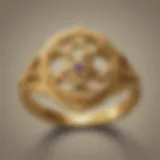Exploring the Iconic Items of the Zelda Universe
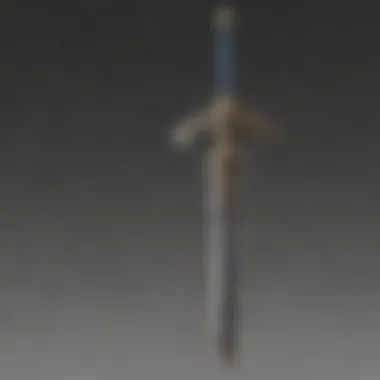
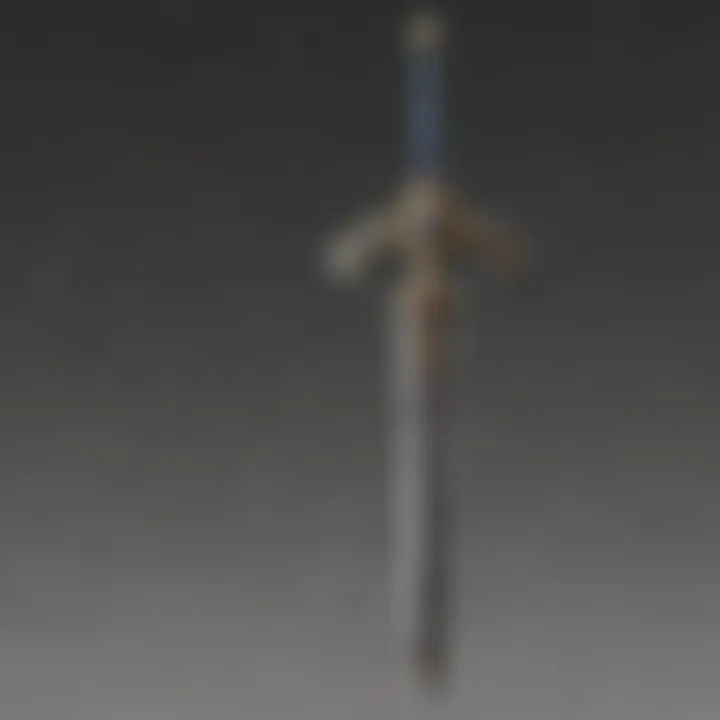
Intro
The Zelda franchise, with its blend of adventure and intricate storytelling, has captivated players for decades. At the heart of this massive universe lies an array of items that have not only aided in gameplay but also enriched the lore and depth of each title. From simple tools to complex artifacts, each item serves a unique purpose, maintaining a delicate balance between utility and narrative significance.
In this article, we will systematically explore these items, analyzing their functionalities and importance in the Zelda games. Each item has a story that interweaves with gameplay mechanics and overall narrative arcs. The categorization of these items will illuminate how they evolve over time while retaining their core roles within the series.
By dissecting the items broadly across various games, this examination will offer insights into not just their mechanics, but also how they shape player experience and influence the overarching Zelda mythos. As we delve deeper into each functional aspect, it becomes apparent that these items are more than mere elements of gameplay; they are crucial threads in the tapestry that is the Zelda story.
Game Reviews
Gameplay Features and Mechanics
The gameplay of Zelda often hinges on the effective use of various items. Each title introduces new tools while frequently showcasing timeless classics. Items such as the Master Sword and Hylian Shield symbolize strength and protection, while others, like the Hookshot or Bombs, facilitate exploration and puzzle-solving.
For example, the introduction of the Magnesis rune in Breath of the Wild changed how players interacted with the environment, allowing for a fresh approach to puzzle-solving.
- Exploration tools enhance player navigation.
- Combat items clarify battle dynamics.
- Puzzle elements rely heavily on specific item functions.
Storyline and Quests
Many quests in the Zelda series pivot around item acquisition and use. Items often represent milestones in Link's journey, making them essential for character development and plot progression. Collecting items, such as the Triforce or elemental stones, ties directly to lore and impacts the overarching storyline.
Visuals and Sound Design
The design of items not only influences gameplay but adds to the visual and auditory experience. From the glowing aesthetic of the Fairy Bow to the iconic sound of obtaining a new item, these moments are carefully crafted to heighten the emotional connection players have with the game.
Comparison with Previous Titles
Each Zelda installment often reflects changes in design philosophy, mechanics, and narrative structure. For instance, the transition from 2D to 3D gameplay in Ocarina of Time allowed for more dynamic uses of items compared to previous games. Newer titles continued to innovate or pay homage to iconic items while evolving their functional significance.
"Zelda is defined not just by its characters or storylines but by the items that propel its adventures forward."
In summary, items are not mere tools; they are integral to the Zelda experience, influencing gameplay mechanics and storylines across various titles.
The following sections will further dissect these elements, exploring the deeper lore and strategies surrounding Zelda items.
Prelims to Zelda Items
The diverse items in the Zelda series serve as crucial components that shape the player's experience. Understanding these items is essential to grasp the overall mechanics and narrative context of the games. Each item is not merely a tool, but a piece of the larger puzzle that influences gameplay and story progression. This exploration is not just about cataloging items, but delving into their impacts, both mechanically and thematically.
Understanding Item Mechanics
Items in Zelda operate under specific mechanics that define their function within the game world. Mechanics dictate how items can be obtained, used, and upgraded throughout the series. For instance, the Master Sword is not just a robust weapon; it represents a transformative journey for Link and also embodies a gameplay progression. Players often need to complete certain quests or defeat specific enemies to access more powerful versions of these items.
Moreover, item mechanics often vary significantly from one title to another. For example, in The Legend of Zelda: Ocarina of Time, the hookshot is essential for navigation and combat, while in The Legend of Zelda: Breath of the Wild, it integrates with the wider environmental interactions, allowing for novel uses in exploration. These mechanics underscore how items reinforce the intended player experience and encourage exploration.
The Role of Items in Gameplay
Items serve multi-dimensional roles within Zelda gameplay, contributing to combat, puzzle solving, and story advancement. They are integral to problem-solving within the game’s environment. A player may find themselves needing to use bombs to break down obstacles, or equipping a certain shield to protect against elemental attacks. This layered approach to item utility encourages strategic thinking and experimentation.
In addition, items often weave into the narrative, reflecting the themes of courage and growth. For example, the acquisition of the Master Sword signifies a rite of passage. Items frequently act as catalysts for change, not only for Link but also for the unfolding story. This relationship between items and gameplay mechanics invites players to engage on multiple levels, making each encounter and item discovery rewarding.
"In the Zelda universe, items are much more than functional tools; they symbolize the ongoing battle between good and evil."
The intricate design of items, combined with their significance in gameplay, renders a rich tapestry that defines the Zelda experience. Players are encouraged to explore, engage, and immerse themselves in a world where every item serves a purpose beyond mere utility.
Essential Items in the Zelda Series
The importance of essential items in the Zelda series cannot be overstated. These items not only serve as the tools that facilitate gameplay but also enhance the narrative and theme of each game. Link's journey often revolves around acquiring and mastering various items that empower him. This section will explore specific elements, benefits, and considerations regarding essential items in the series.
The Sword: Link's Primary Weapon
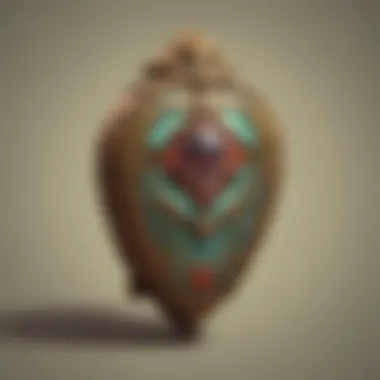
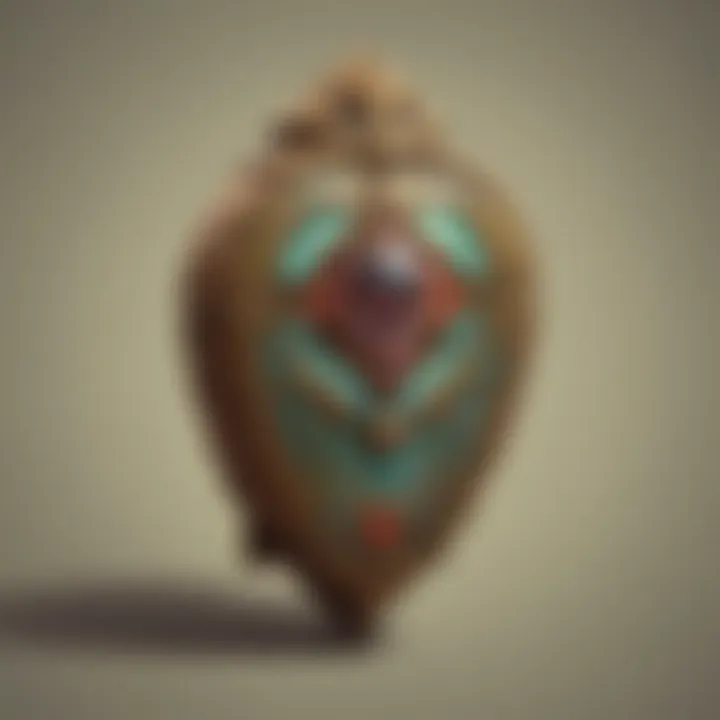
The sword is central to Link's identity as a hero. The various incarnations of the sword throughout the series often represent change and growth in both gameplay mechanics and story. Notably, the Master Sword stands out as the iconic weapon, symbolizing the struggle against evil.
Link's skill with his blade is put to the test in every adventure. The design and combat mechanics associated with the sword evolve over time, adapting to each game's style. Some games introduce unique sword techniques, while others allow for upgrades. The experience of using the sword becomes deeply intertwined with the player's engagement in battle.
Moreover, the sword often unlocks new paths within the storyline. Encountering the Master Sword marks a pivotal moment for Link. Players experience not just a shift in power but also a significant narrative development. This connection between weapon and story reinforces the player's investment in both their gameplay and the unfolding narrative.
Shields: Defense Tactics
Shields serve as an essential aspect of defense in combat scenarios. They provide Link with the ability to block attacks and protect against enemy damage. Various types of shields are available in different titles, each offering unique attributes. For instance, the Hylian Shield exemplifies durability and strength, while other shields may provide specific enhancements, like reflecting projectiles.
The tactical choices associated with shield use add a layer of strategy to the combat system. Players must decide when to block and when to counterattack. This depth requires a level of skill that adds to the gameplay experience.
Additionally, shields often have aesthetic designs that contribute to the game's lore. Each shield tells a story of its origin and significance within the Zelda universe. As a result, they not only contribute to gameplay mechanics but also enrich the narrative, drawing players deeper into the world of Hyrule.
Bows and Arrows: Precision Attacks
The bow and arrows provide Link with ranged attack options that require precision and timing. This set of items emphasizes skill-based gameplay, compelling players to hone their aiming abilities. The introduction of various arrow types, such as fire arrows or ice arrows, expands the strategic possibilities. Players can approach encounters in diverse ways, which makes gameplay more dynamic.
In specific titles, archery mechanics play a key role in puzzle-solving and exploration. Certain environments necessitate the use of arrows to activate switches or defeat distant foes. This versatility enhances the connection players develop with their surroundings and encourages creativity.
Moreover, bows and arrows frequently appear in key moments of the storyline, where marksman skills become a metaphor for precision in achieving larger goals. As such, the impact of these items goes beyond mere combat, intertwining them with the narrative progression as Link progresses through challenges.
These elements encapsulate the depth and complexity of Zelda items, highlighting their significance in both gameplay mechanics and the overarching narrative.
Special Items and Their Uses
Special items in the Zelda franchise serve vital roles, going beyond mere tools for combat or navigation. These items enrich the gameplay experience, often introducing unique mechanics or strategies that challenge players to think creatively. Their diverse functions range from casting powerful spells to facilitating exploration in a vast world filled with obstacles. Understanding special items offers key insights into Zelda's complex design and adds layers of depth to both gameplay and storyline.
Magic Items: Spells and Special Abilities
Magic items bring a distinctive flair to the Zelda universe. They often embody mystical qualities that reflect the game's overarching themes of good versus evil, such as the use of spells to repel dark forces. Examples of magic items include the Magic Rod, which allows users to unleash elemental attacks, and the Ocarina of Time, a tool that connects time and music, granting players the ability to manipulate time or summon allies.
Magic items offer strategic advantages in various scenarios. For instance, during battles, the ability to cast spells can turn the tide against formidable foes. Additionally, their requirement for magic power adds a resource management element, pushing players to consider when and how to use their spells effectively. This can lead to intriguing moments during gameplay, forcing players to weigh the immediate benefits of using a spell against potential future needs.
Tools for Exploration: Grappling Hooks and Bombs
Tools for exploration are essential for navigating the complex landscapes of Zelda games. Items like the Grappling Hook and various types of Bombs transform the way players interact with the environment. With the grappling hook, players can reach otherwise inaccessible areas, thus unlocking secrets and treasures. This item encourages exploration and rewards curiosity, a fundamental aspect of the Zelda series.
Bombs, on the other hand, serve multiple purposes. They are used in combat, but their primary role is to clear obstacles or reveal hidden pathways. The versatility of bombs is significant, as they can be placed strategically to solve puzzles or defeat enemy clusters. This dynamic interaction widens the scope of gameplay and enhances engagement with the environment.
Special items are not merely tools; they are the keys that unlock new paths in the adventure, shaping both player experience and narrative progression.
Legendary Artifacts and Their Significance
In the rich lore of the Zelda series, legendary artifacts stand as pillars of the narrative, weaving together themes of power, courage, and wisdom. These artifacts not only enhance gameplay through their unique abilities but also contribute significantly to the overarching mythos of Zelda. Understanding their significance helps players appreciate the depth of the storytelling and the mechanics intertwined with the gameplay. The legendary items, particularly the Triforce and the Master Sword, symbolize the core principles that drive the Zelda universe.
The Triforce: A Symbol of Power
The Triforce is perhaps the most iconic of all Zelda artifacts. It comprises three golden triangles, each representing a fundamental virtue: Power, Wisdom, and Courage. Together, they form a powerful emblem that plays a crucial role in the game's lore. This trifecta is not merely decorative; it serves specific functions within the gameplay.
- Power: Represented by Ganondorf, the antagonist, who embodies ambition and tyranny. His pursuit to control the Triforce reflects the dangerous allure of power.
- Wisdom: Typically associated with Princess Zelda herself, symbolizes intellect and strategy. Her connection to the Triforce often illustrates her pivotal role in guiding Link.
- Courage: Linked to Link, the protagonist, who embodies the determination needed to overcome evil forces.
These attributes fuel the game's conflict. The pursuit of the Triforce also introduces various narrative arcs, where characters undergo transformation and growth based on their engagement with the three virtues. The player experiences it actively, as obtaining pieces of the Triforce often culminates in the resolution of the primary conflict within each title.
Master Sword: The Blade of Evil's Bane
The Master Sword represents the epitome of heroism and strength in the Zelda series. It is often regarded as the only weapon capable of defeating the primary antagonist, Ganondorf. Marked by its unique design, the sword symbolizes Link's growth as a hero and his connection to the legendary powers at play in Hyrule.
Some key aspects to explore regarding the Master Sword include:
- Origin and Lore: The origins of the Master Sword are steeped in myth. Created to combat evil, its origins trace back to the gods, reinforcing its significance in the fight against darkness.
- Game Mechanics: In gameplay, the Master Sword can transform or gain enhanced abilities, such as shooting beams of light, which adds layers to the combat experience. Such mechanics not only empower the player but also enhance engagement with the game's environment.
- Narrative Role: The journey to obtaining the Master Sword serves as a rite of passage, marking Link's evolution from a young boy to a hero ready to face formidable challenges. This transformation resonates with players, weaving personal growth into the gameplay.


"The Master Sword is not just a weapon; it is a key to understanding the journey and trials faced by Link, encapsulating the essence of heroism."
In summary, legendary artifacts like the Triforce and the Master Sword are not merely tools within the Zelda series; they are central to its narrative, gameplay, and lore. Their significance is profound, often reflecting the moral values and struggles faced by the characters within this expansive universe.
Items Unique to Specific Titles
In the extensive Zelda franchise, certain items stand out due to their uniqueness to specific titles. These items not only enhance gameplay but also shape the narrative experience in ways that resonate deeply with players. Different titles introduce new mechanics and resources, allowing for diverse forms of interaction within the game world. Understanding these unique items gives deeper insight into gameplay variety and the evolving nature of the series.
The Magic Meter: A Dynamic Resource
The Magic Meter represents a pivotal mechanic introduced in various Zelda titles, such as The Legend of Zelda: Ocarina of Time and The Legend of Zelda: Majora’s Mask. This meter serves as a gauge for a player's magical capabilities. When it is fully charged, players can unleash powerful abilities that dramatically affect gameplay.
Origins and Implementation
The origins of the Magic Meter can be traced back to earlier RPG elements, which inspired the Zelda series. It is integrated as a resource that players must manage carefully. Its key characteristic is that it allows players to access special abilities that are critical in both combat and puzzle-solving scenarios. This is a beneficial choice because it introduces a layer of strategy.
The unique feature regarding its implementation is how it can regenerate over time or with the use of specific items. The disadvantages can include limiting the player during boss fights or challenging areas where a constant use of magic is essential. Thus, it encourages players to strategize their resource use without exhausting their magical capabilities too soon.
Impact on Gameplay
The impact of the Magic Meter on gameplay is substantial. Players must consider their Magic Meter when choosing how to engage enemies or overcome puzzles. The key characteristic here is that it significantly influences combat dynamics. For instance, spells that consume a portion of the Magic Meter create a risk-vs-reward situation during engagements.
A unique feature is its relationship with specific locations within the game, as some areas may have magic wells to replenish it or enemies that drop items refilling the meter. The disadvantage is that relying solely on magic-based strategies may hinder a player's adaptability in gameplay, especially in scenarios that demand quick thinking or different strategies. Therefore, it is vital to balance both combat styles appealing to various player types.
Transformational Items: Masks and Amulets
Transformational items, such as masks and amulets, play a significant role in specific titles like The Legend of Zelda: Majora's Mask. These items allow Link to assume various forms or gain unique abilities. This mechanic not only changes the way the player engages with the world but also alters interactions with characters and enemies.
Masks can grant powers, such as increased speed or different combat styles. Each mask connects players to distinct mechanics essential for puzzle-solving and exploration. In contrast, amulets often influence attributes or grant likable bonuses.
The innovative utilization of transformation items enhances player immersion. They integrate deep narrative elements by intertwining character progression with gameplay mechanics. This showcases how items can evolve in function and purpose, reflecting the unique array of challenges each title presents.
The Evolution of Items Across the Series
The evolution of items across the Zelda series marks a crucial aspect of its enduring legacy. Items not only serve functional purposes but also deepen the narrative, reflecting changes in technology, design philosophy, and player expectations. Each title in the franchise contributes to this evolution, showcasing how items adapt to enhance gameplay mechanics and overall experience. Understanding this evolution provides valuable insights into the shifts in game design and how they influence player engagement.
Design Changes Over Time
From the inception of the franchise in 1986, items in The Legend of Zelda have undergone significant design transformations. The original game featured a simple interface and a limited selection of items. As each successor was released, the developers introduced new concepts and refined existing ones.
For example, The Legend of Zelda: Ocarina of Time revolutionized the series by incorporating 3D graphics and a more complex item management system. The introduction of the Ocarina, an item used for time manipulation, showcased an innovative design that blurred the line between gameplay and storytelling. Later, in The Legend of Zelda: Breath of the Wild, item durability and weapon variety were key enhancements that emphasized strategy and resource management. The weapons, shields, and bows now had unique properties, requiring players to think critically about their items’ usage.
These design changes reflect broader trends in the gaming industry. As technology advanced, so did the possibility for more intricate item interactions and visuals. Item interfaces became more user-friendly, leading to a more engaging player experience. The evolution from simple 2D sprites to detailed 3D models allows players to appreciate items as integral elements of the game's world.
Gameplay Mechanics Evolution
The evolution of gameplay mechanics in relation to items in the Zelda franchise is equally significant. Early games relied heavily on the basic concepts of combat and exploration. However, as the series progressed, items became essential to complex game mechanics and puzzle design.
In The Legend of Zelda: The Wind Waker, for instance, items like the Grappling Hook and Balloon opened new avenues for solving puzzles and navigating the game world. Players had to think critically about their item selection and timing, leading to a more nuanced experience. In The Legend of Zelda: Twilight Princess, the addition of items with dual purposes, such as the Clawshot, further diversified gameplay. It allowed players to engage in both combat and navigation simultaneously.
Moreover, the integration of items into the game environment marks a shift towards immersive gameplay. The mechanics evolve to encourage exploration and strategic thinking, pushing players to discover innovative ways to utilize their inventory. This evolution demonstrates a deep understanding of player needs and desires, making items not just tools but gateways to rich exploration.
Impact of Items on Puzzle Solving
The Zelda series is renowned for its intricate level design, where items play a pivotal role in puzzle solving. Understanding how items enhance this gameplay aspect provides insight into the game's depth. Each item is not merely a tool but a crucial element integrated within the fabric of puzzles, creating a dynamic interaction that challenges and engages players. This section will delve into the various ways items impact puzzle solving through their design and integration.
Puzzle Design and Item Integration
Puzzle design in Zelda games often hinges on clever item usage, encouraging players to think critically and creatively. Developers craft puzzles in such a way that specific items are required to unlock pathways or defeat obstacles. For example, the Hookshot can bridge gaps or grab distant items, while bombs can break down walls or defeat certain enemies. This calls for players to not only possess these items but also understand their functionality fully.
Consider the Water Temple in Ocarina of Time. Players need to use the Longshot strategically to navigate through its depths, emphasizing not just the item’s utility but also its timing and context within the puzzle itself. This design encourages exploration and experimentation, enhancing the overall gameplay experience. By intertwining the items with the environment and challenges, Zelda games elevate the notion of problem-solving well beyond mere button mashing.
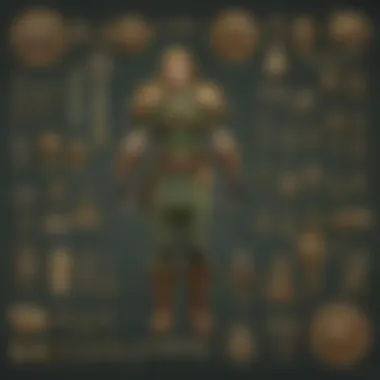
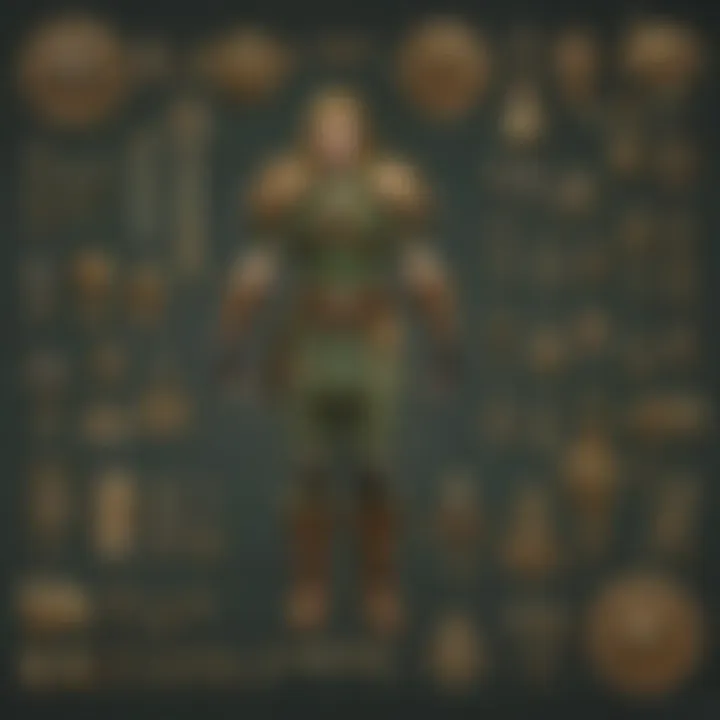
Case Studies from Notable Dungeons
Analyzing notable dungeons across the Zelda series reveals how item-based puzzles significantly shape the gameplay.
- The Forest Temple in Ocarina of Time: This dungeon makes use of the Bow and arrows to defeat enemies and unlock doors. Players must shoot lanterns to reveal hidden paths, making the bow an integral part of puzzle completion.
- The Spirit Temple in Ocarina of Time: Here, players switch between young and adult Link, using items that correspond to each era to solve puzzles. The design relies heavily on using the boomerang and Din's Fire, demonstrating the strategic application of items.
- Skyview Temple in Skyward Sword: This temple integrates the Beetle item, allowing the player to scout areas from a distance. The puzzles require players to control the Beetle to access out-of-reach areas, showcasing innovative use of items in puzzle solving.
These examples underscore the importance of item integration in creating memorable and challenging experiences. The synergy between items and puzzle design not only serves to advance gameplay but also enriches the storytelling elements within the game. Players often find themselves reflecting on their journey through these dungeons, appreciating how each item has shaped their experience.
Comparative Analysis of Items in Different Titles
The exploration of items across various Zelda titles enriches our understanding of the franchise's design philosophy. Each game offers unique mechanics, and examining these can reveal trends in both gameplay and narrative integration. By analyzing items from different titles, we gain insight into how item functionalities shift and adapt to enhance player experience.
Common Items Across Zelda Games
Many items recur throughout the Zelda series, reflecting a core gameplay structure. Items like the Master Sword, bombs, and shields are foundational.
- Master Sword: The iconic weapon symbolizes strength and courage. Its presence suggests familiarity for players, tying back to Link's continual battle against evil.
- Bombs: These explosive tools are essential for puzzle-solving and combat. Their functionality evolves, from simple destruction to revealing hidden paths.
- Shields: They provide defense, emphasizing strategy in combat. Different shields offer unique attributes, encouraging varied play styles.
Each of these items, while similar in name, can differ significantly in utility from title to title. For instance, the use of bombs in "The Legend of Zelda: Ocarina of Time" compared to "The Legend of Zelda: Breath of the Wild" showcases how developers refine item mechanics to suit changing gameplay trends. Players often notice these nuances while navigating dungeons and engaging with enemies, enhancing overall immersion.
Unique Item Features in Spin-offs
Spin-off titles introduce new items that deviate from the main series but still maintain a deep connection with the core Zelda concepts. Take Hyrule Warriors, for example. The inclusion of items like elemental rods or gems adds layers to gameplay.
- Elemental Rods: Unlike traditional weapons, they enable players to unleash elemental attacks. These rods contribute to strategic combat, allowing players to exploit enemy weaknesses.
- Gems: These items offer buffs or enhancements, enhancing character abilities. Their diverse applications encourage experimentation, making them appealing to players seeking variety.
The unique attributes of spin-off items enrich the overall Zelda universe. They show how the franchise remains innovative, appealing to both dedicated fans and newcomers. Through these distinct features, the series continues to explore new gameplay mechanics, blending familiarity with novelty.
By conducting a comparative analysis of items throughout the Zelda games, we understand the evolving design choices that define this beloved franchise. This understanding forms a bridge between nostalgia and innovation, appealing to a wide range of players and ensuring the series retains its relevance in a changing gaming landscape.
Community Perspectives on Zelda Items
The Zelda franchise boasts a rich tapestry woven from its dedicated fanbase. Community perspectives offer valuable insights, revealing how players interact with and perceive items throughout the series. This section delves into the intricate relationship between fans and items in Zelda, highlighting how these perspectives enhance the overall discourse surrounding the games.
Fan Theories Surrounding Notable Items
Fan theories often spring up around various items in the Zelda universe. Players derive various interpretations and deeper meanings from the same object, contributing to the series’ lore in unexpected ways. For instance, the Master Sword is often surrounded by discussions regarding its origins and true power. Fans speculate that the sword holds a connection to the Triforce, influencing its ability to banish evil. This ongoing dialogue not only enriches the gameplay experience but also generates a vibrant community engagement that fuels online forums and social media discussions.
Furthermore, theories can lead to intense debates, showcasing the analytical skills of players eager to uncover hidden narratives. Players often dissect graphical details, game mechanics, and textual clues to bolster their theories. This process creates a layer of complexity to the items, transitioning them from mere tools to symbols with deeper significance. Thus, fan theories not only entertain but also expand the universe and create shared experiences among the community.
Item Usage in Speedruns and Challenges
Items also play a pivotal role in the speedrunning community within the Zelda fandom. Speedrunners exploit specific items to craft strategies that minimize completion times. For instance, the Hookshot in The Legend of Zelda: Ocarina of Time is frequently used to bypass obstacles and traverse vast distances effectively. This strategic employment transforms how players perceive weapon functionality.
The application of items in challenges pushes the boundaries of what's possible within the games. Enthusiasts often set constraints on item usage, creating self-imposed rules that demand creativity and skill. For example, players might attempt a run using only certain items or avoiding key items altogether, adding levels of difficulty that appeal to hardcore fans.
"The use of items in speedrun scenarios showcases the ingenuity of the Zelda community, revealing a spectrum of strategies that lay unseen beneath the surface of the game’s design."
This dynamic illustrates how items serve not just as tools but also as pivotal components in the construction of gameplay identity and community competitiveness. As players share their methods and accomplishments through streaming platforms or social media, they contribute to a collective knowledge base that further cements Zelda's cultural legacy.
Ending: The Legacy of Zelda Items
The conclusion of our exploration into Zelda items encapsulates not only their significance within the franchise but also their lasting impact on the gaming industry as a whole. Items in Zelda games are more than just tools; they shape gameplay mechanics, storytelling, and player engagement. As we reflect on their legacy, we must consider multiple facets, such as innovation in design, influence on subsequent games, and the ongoing fascination they provoke among fans.
Influence on Future Game Design
Zelda items have pioneered many design principles that have been adopted by game developers across genres. The clever integration of items into gameplay encourages players to think creatively. For instance, the way the boomerang serves dual functions as both a weapon and a puzzle-solving tool has inspired similar mechanics in other games. This adaptability enhances the player's experience by requiring them to utilize items in varied contexts.
Developers often look to Zelda for motivation. Titles like The Legend of Zelda: Breath of the Wild introduced expansive item interactions, allowing players to combine items in ways that change the game dynamics significantly. Such innovations set a precedent for open-world gameplay, influencing games like Genshin Impact and Hollow Knight. The concept of an expanding inventory that grows more complex with player progress remains an important feature in modern game design.
Enduring Fascination with Zelda's Inventory
Zelda's inventory system embodies an often-cited example of player engagement. Enthusiasts continue to discuss and analyze the various uses and limitations of items over the years. The Triforce, the Master Sword, and other unique artifacts not only serve critical roles in their respective games, but they also contribute to the lore and emotional connection players develop with the franchise.
Online communities often engage in conversations about favorite items. For instance, the Hookshot is celebrated for its versatility. Similarly, speedrunners frequently strategize the most efficient use of items to complete their objectives quickly. This vibrant dialogue demonstrates how Zelda's items create memorable experiences that resonate long after the gaming session concludes.
In summary, the legacy of Zelda items shapes not only the player experience within the franchise but also influences wider game design practices. Their enduring appeal and innovative mechanics ensure that they will remain a focal point of discussion for years to come, reinforcing the strong connection between players and the rich world of Zelda.
